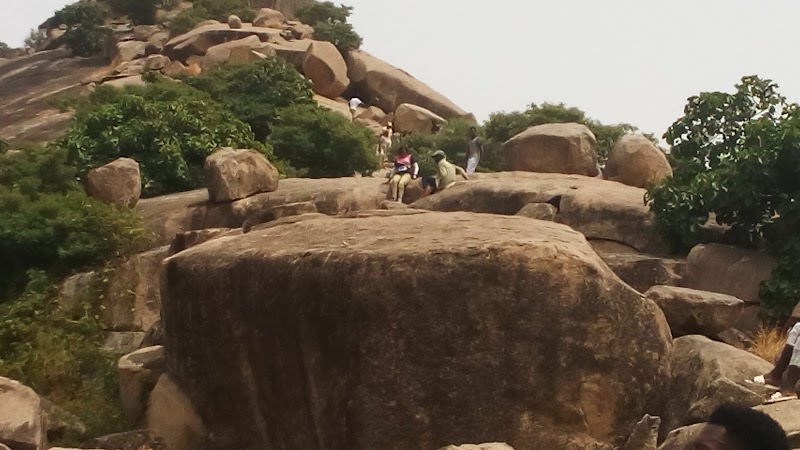
The Durbar Festival in Katsina electrifies northern Nigeria with its powerful horse parades and rich traditions. Witness centuries-old ceremonies firsthand while navigating the vibrant streets and preparing smartly for the intense heat and busy crowds.
Arrive Early for Prime Viewing
The festival draws large crowds and road closures become common. Arriving early ensures you find a good spot to see processions without stress.
Stay Hydrated and Sun-Protected
Katsina’s dry heat demands regular water intake and applying sunscreen; bring a wide-brimmed hat to reduce sun exposure during long outdoor hours.
Wear Durable Footwear
Festival streets can become dusty, uneven, and littered. Closed-toe shoes with good grip are a must for comfort and safety.
Respect Local Customs
Photography rules and social etiquette vary; always ask permission before photographing people, and observe from designated areas.
Riding the Thunder: Exploring Katsina’s Durbar Festival
Each year in Katsina, the Durbar Festival erupts with the energy of countless hooves pounding earth, filling the air with the clash of swords and the echo of traditional drums. This centuries-old spectacle commands attention—not just as a cultural celebration but as a vivid experience you engage with directly. Taking place after the Eid al-Fitr prayers, Durbar is the grandest horse-riding festival of northern Nigeria, showcasing the skill and valor of emirs, chiefs, and horsemen in a series of processions called Hawan Daushe.
The heart of Durbar lies in Katsina’s old city, where the Emir’s palace opens its gates to a procession that can stretch for miles. Expect to witness hundreds of riders clad in richly embroidered gowns and turbans, their horses adorned with colorful leather and brass trappings. These animals are more than transportation; they’re partners in a ritual performed with precision, pride, and a deep respect for tradition.
The terrain underfoot is mostly urban but rooted in dusty, packed earth that can kick up under the horses’ charge, reminding spectators they are watching a raw and real confrontation between man, animal, and history. If you plan to attend, mornings are best, as the dry air is cooler and the light catches the intricate outfits and gleaming weapons vividly.
For practical purposes, getting around Katsina during the festival requires planning. Roads close or become congested, so arriving early at designated viewing spots is essential. Bring durable shoes—sandals won’t cut it on streets softened by festival crowds and occasional stray manure. Hydration is critical; the intense heat of northern Nigeria works fast against dehydration. Sunscreen and hats are non-negotiable if you’re standing for hours in the sun.
Beyond the main parade, smaller, quieter moments enrich the event—the scent of smoky grills from nearby food stalls, the spontaneous chant of praise singers, or the steady rhythm of the talking drums challenging the crowd with their beats. Durbar is more than a show; it is Katsina’s fierce identity revealed through movement, sound, and color.
For adventure seekers and culture lovers alike, this festival offers an immersive experience without pretense. It’s an active engagement—pack your essentials, prepare for sensory intensity, respect the traditions, and you’ll find a festival fiercely itself, inviting you into Nigeria’s historical pulse.
Nearby Trips
All Adventures
Boat Charters
Water Activities
Adventures near Katsina, Katsina State
Discover the unique and memorable adventures that make Katsina, Katsina State special.
Frequently Asked Questions
What is the historical significance of the Durbar Festival?
Durbar dates back centuries as a celebration of Islamic festivals and royal ceremonies honoring the emirates’ power and military history. It served both as a show of allegiance and a public display of horsemanship.
Are visitors allowed to ride horses during the festival?
Only official participants, mainly nobility and designated horsemen, take part in the processions. Visitors can observe closely but are not permitted to ride horses.
Where in Katsina is the best spot to view the Durbar procession?
The area near the Emir’s palace and the main streets leading from the central mosque offer the most immersive views with space to witness the full pageantry.
Is it safe to attend the Durbar Festival as a solo traveler?
Yes, but it’s wise to remain in groups when possible, stay in well-known areas, and be mindful of sudden crowds or activities.
Are there any special wildlife encounters during the festival?
While the festival is urban-centered, local birdlife like doves and small passerines frequently flutter through city markets and open courtyards, providing quiet counterpoints to the festival’s energy.
Can I purchase traditional crafts or food during the Durbar?
Yes, local artisans and food vendors set up close to the festival route. Expect leather goods, embroidered textiles, and grilled meats offering authentic regional flavors.
Recommended Gear
Closed-Toe Comfortable Shoes
Will protect your feet from uneven and dusty festival streets.
Reusable Water Bottle
Staying hydrated is critical under the dry sun of Katsina.
Broad-Brimmed Hat
Provides much-needed shade during long hours outdoors.
Lightweight Scarf
Useful against dust and for respect in certain photo situations.
Local Insights
Hidden Gems
- "The intricately carved wooden balconies of Katsina’s old houses observed along side streets during the festival"
- "Small family-run leather workshops crafting horse trappings used in the parade"
Wildlife
- "Urban birds like the African grey hornbill"
- "Sparrows and doves that perch near marketplaces"
History
"Katsina has been a seat of Hausa and Fulani rulership for centuries, with the Durbar Festival symbolizing a living connection to its martial and Islamic heritage, reinforcing the emir’s role as both spiritual and temporal leader."
